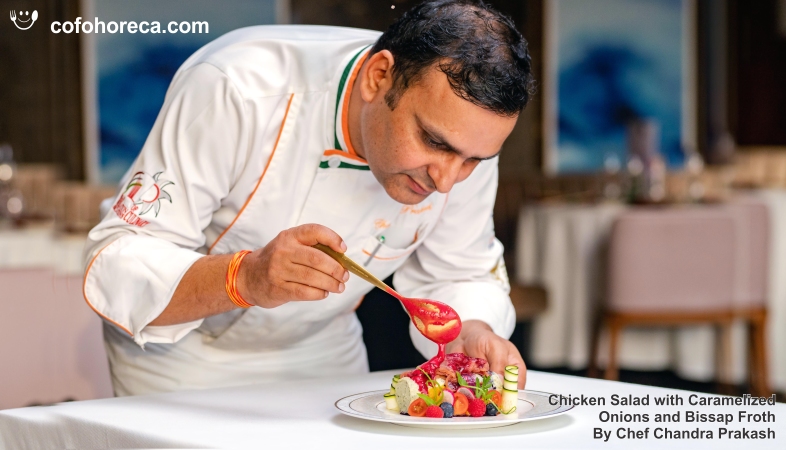Developing a Multi-Channel Strategy for Attracting Different Guest Segments to Hotels and Restaurants
A multi-channel strategy is key to attracting different guest segments to hotels and restaurants.
In today’s competitive hospitality industry, attracting and
retaining guests requires a comprehensive approach that caters to diverse
consumer preferences. As hotels and restaurants seek to increase visibility and
grow their clientele, a well-planned multi-channel strategy is essential. By
utilizing various marketing channels, businesses can reach a wider range of
potential guests, appeal to different customer segments, and enhance the
overall guest experience. A multi-channel approach integrates both traditional
and digital platforms to create a seamless and engaging experience for guests,
ensuring that they are effectively targeted through the right touchpoints.
The first step in developing a multi-channel strategy is understanding the diverse guest segments that a hotel or restaurant serves. Different types of customers have unique needs and expectations. For example, business travelers often prioritize convenience, luxury, and streamlined services, while leisure travelers may be more interested in experiences, family-friendly amenities, and price-sensitive offerings. Similarly, fine-dining restaurant guests may seek exclusivity and high-end cuisine, while casual diners might be drawn to budget-friendly options with a focus on comfort and accessibility. By recognizing these different segments, businesses can tailor their marketing efforts to meet their specific preferences.
To successfully implement a multi-channel strategy, hotels and restaurants need to utilize a mix of marketing channels that effectively reach each segment. Digital channels, such as social media, email marketing, search engine optimization (SEO), and paid digital advertising, play a crucial role in attracting a broad audience. Social media platforms like Instagram, Facebook, and Twitter are ideal for engaging with younger, tech-savvy travelers who are more likely to make decisions based on visuals and online reviews. Hotels and restaurants can showcase stunning images of their offerings, share promotions, and interact directly with potential guests, fostering a sense of community and connection.
Email marketing is another powerful tool in a multi-channel strategy. By building segmented email lists, businesses can deliver personalized messages and offers to specific guest groups. For instance, a hotel can send tailored discounts for weekend getaways to families, or offer corporate clients special rates for extended stays. This level of personalization builds loyalty, as guests feel like they are being treated as individuals rather than a generic customer base. Additionally, using automated emails for booking confirmations, post-stay feedback requests, and seasonal offers can keep guests engaged long after their initial visit.
Search engine optimization (SEO) ensures that a hotel or restaurant ranks high on search engines like Google, making it easier for potential guests to find them when searching for relevant keywords. For hotels, this could mean optimizing the website for terms like “luxury hotels near me” or “family-friendly accommodations,” while restaurants might target keywords such as “best Italian restaurants” or “vegan-friendly dining.” By optimizing their content, businesses can capture the attention of online searchers who are actively looking for the services they offer.
Paid digital advertising on platforms like Google Ads or social media allows businesses to increase their reach and visibility to targeted audiences. Through pay-per-click (PPC) campaigns, ads can be tailored based on user demographics, behaviors, and interests. For example, a hotel targeting honeymooners can create ads that showcase romantic packages, while a restaurant may offer discounts or promotions to attract customers in the local area. By paying to have their offerings appear prominently in search results or social media feeds, businesses can quickly gain exposure and attract new customers.
While digital channels are essential, traditional marketing methods still play a significant role in reaching specific guest segments. Local newspapers, magazines, and radio ads are effective for targeting certain demographics, particularly older or more traditional customers who may not be as engaged with online channels. Furthermore, direct mail campaigns, such as sending postcards with promotional offers to local residents or past guests, can serve as a reminder of the business’s offerings and encourage repeat visits. Events like food festivals or trade shows also provide an opportunity for hotels and restaurants to showcase their services to a specific audience, directly engaging with potential guests.
A multi-channel strategy is key to attracting different guest segments to hotels and restaurants. By leveraging a combination of digital and traditional marketing channels, businesses can engage with a broad audience, offer personalized experiences, and foster brand loyalty. With the right mix of social media, email marketing, SEO, paid advertising, and traditional methods, businesses can ensure they are visible and appealing to potential guests. Tailoring the strategy to different customer segments and measuring its success will ensure sustained growth and a competitive edge in the ever-evolving hospitality industry.
.png)






















 at ITC Hotels.jpeg)





